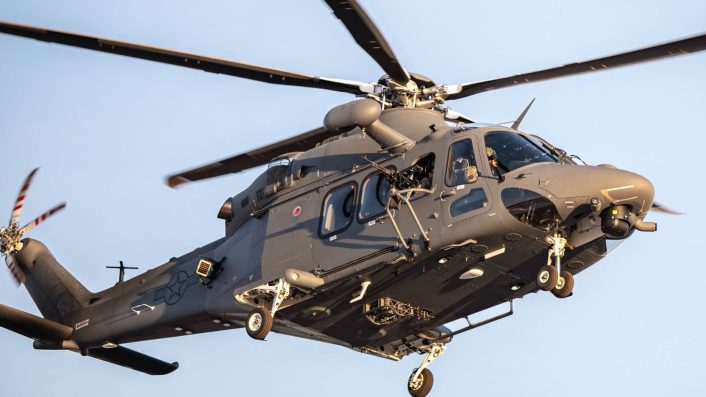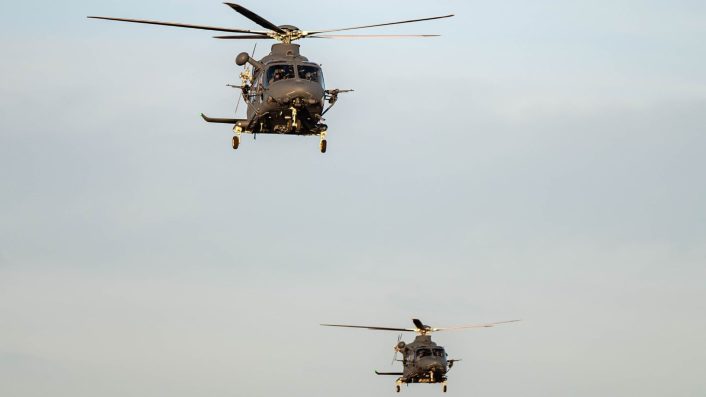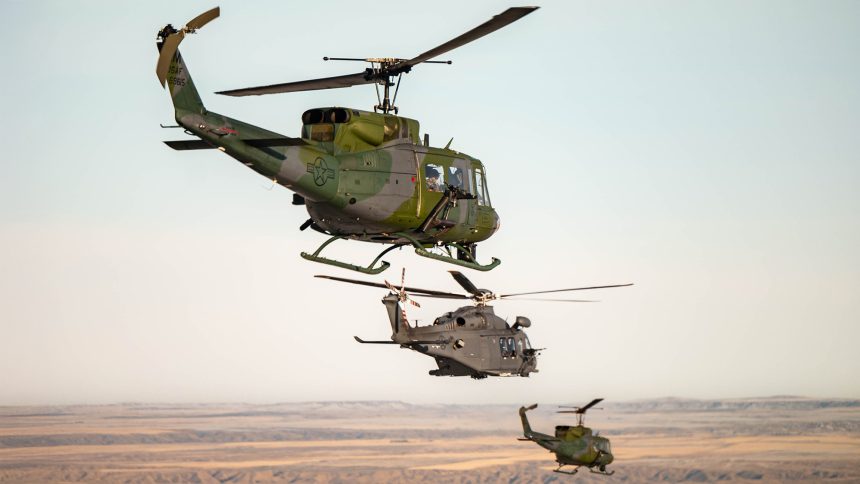The rigorous testing and evaluation process saw the MH-139A helicopters responding to a simulated threat with a full tactical response force loadout and onboard weapons.
The U.S. Air Force’s MH-139A Grey Wolf is rapidly transitioning into its role of supporting the nuclear security mission by patrolling the country’s nuclear bases and securing launch sites to eventually replace the older UH-1N Hueys. The Air Force announced that, for a week from Jan. 28, 2025, it began the MH-139A’s IOT&E (Initial Operational Test and Evaluation), assessing its “operational effectiveness, suitability and survivability in a realistic and operational environment,” at Malmstrom AFB (Air Force Base) in Montana, which hosts a Minuteman III ICBM launch silos.
The testing involved two UH-1N Hueys from the 40th Helicopter Squadron (40th HS) and two MH-139A Grey Wolf helicopters from the 550th HS in the IOT&E. The trials assessed “the system’s operational effectiveness, suitability and survivability in a realistic and operational environment.” In the three MH-139 IOT&E flights, one tested its ability to “support a convoy, assessing communication systems and general convoy support operations,” the other two “focused on emergency response, specifically launch facility recapture and recovery – measuring response times from idle to airborne.”
The “rigorous testing and evaluation process” saw the “helicopters responding to a simulated threat with a full tactical response force loadout and onboard weapons.” This is to satisfy Congressional stipulations requiring the IOT&E to ensure the aircraft can undertake its assigned role and “successfully” and “seamlessly assume” the responsibility of its predecessor – in this case the UH-1N Huey – without any lapse in capability.
The tests
The UH-1N Huey’s role was to transport “emergency security forces, providing security and surveillance for off-base nuclear weapons convoys, and conducting distinguished visitor airlifts.” Besides, the Huey is also used for disaster response, search and rescue, medical evacuations, airborne cable inspections, aircrew survival training support, aerial testing and routine transport to missile sites.”
Flight Engineers also undertook managing “in-flight systems,” monitored aircraft performance” while assisting the pilots with navigation operations. As The Aviationist explained in a previous report about the MH-139A Grey Wolf participating in its first training exercise at Maxwell AFB in Alabama, it will conduct aerial patrols near nuclear missile bases and respond to contingency situations.
In the latest series of tests, the helicopters carried a team of five fully-armed TRF (Tactical Response Force) airmen, to test the helicopter’s ability to “insert and extract tactical response force Airmen, while maintaining effective communication between the air and ground forces.” The TRF teams too were “separately evaluated on their performance by Defenders from the weapons and tactics department.”
In the testing scenario, TRF and 550 HS alert forces were notified “of a simulated emergency at a nuclear launch facility.” Upon arrival, Grey Wolf crews flew over the scene multiple times, “before landing at a secure distance to deploy TRF teams.” The helicopters then again quickly took off for providing aerial cover. The TRF teams meanwhile used “their shoot, move and communication tactics” and “neutralized the simulated enemy threat” to recapture the launch facility.

Both the MH-139s were also carrying two M240 7.62 mm belt-fed machine guns on the door bays, as part of the standard aerial patrolling loadout. However, it does not appear that the guns were fed by ammunition belts, as seen in the official images.
The introduction of the MH-139A Grey Wolf is also taking place at a time when the $140 billion LGM-35A Sentinel ICBM (Intercontinental Ballistic Missile), part of the Ground-Based Strategic Deterrent (GBSD) is being developed to replace the older Cold War-era Minuteman III missiles.
A large part of the Sentinel’s cost-overruns and price component is related to constructing the related specialized ground facilties, underground silos, handling infrastructure, manufacturing and installing maintenance equipment, cabling, software and communications systems. The Grey Wolf would guard these once the missile is operational.

A report will soon be prepared by the 550th HS for the AFGSC (Air Force Global Strike Command), for that office to initiate the process of formally assigning the “nuclear security mission” to the MH-139. It subsequently also allows the UH-1N Huey to be retired from duty at Malmstrom AFB.
Prior developments
Meanwhile, Boeing announced on Jan. 11, 2025 that Malmstrom AFB received 2025’s first MH-139A, making it the sixth production helicopter joining the base. “The helicopter features advanced tech for quick, quiet, efficient and safe transport and missile security missions,” the company said. The 550th HS at Malmstrom AFB received the first production Grey Wolf on Aug. 5, 2024, as a part of a $285 million Low-Rate Initial Production (LRIP) order of 13 helicopters approved in 2023.

The MH-139A Grey Wolf is a variant of the AW139M, itself the militarized version of Leonardo’s AW139 commercial helicopter, meant to replace the U.S. Air Force’s Vietnam-era UH-1N Hueys. The primary role of the helicopter will be to support the nuclear security mission, conducting aerial patrols near nuclear missile bases and responding to contingency situations. Leonardo first produces the base helicopter at its facility in northeast Philadelphia, and Boeing then modifies and outfits the aircraft with the necessary military equipment.









